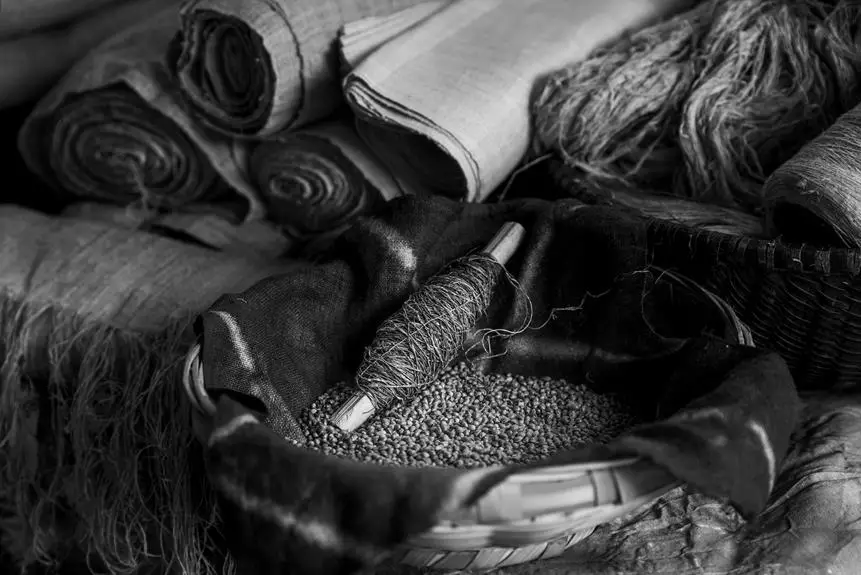When you're working with poly tricot fabrics, understanding the typical weight range is crucial for determining the best use and construction. You'll find that poly tricot fabrics can vary significantly in weight, but generally, they fall within a specific range. But what exactly is that range, and how does it impact the performance and characteristics of the fabric? Knowing the typical weight range of poly tricot fabrics will help you make informed decisions about your projects, from choosing the right fabric for activewear to selecting the best material for industrial textiles. But first, let's explore what that range looks like.
Table of Contents
Understanding Poly Tricot Fabric
Poly tricot fabrics are a type of knit fabric made from polyester fibers. They're created using a tricot knitting process, which involves interlooping yarns to form a fabric with a soft, smooth surface.
This construction method gives poly tricot fabrics their characteristic drape and flexibility.
When you look closely at a poly tricot fabric, you'll notice that it has a subtle sheen and a smooth, even texture. This is due to the way the polyester fibers are woven together.
The tricot knitting process allows for a high degree of flexibility and stretch, making poly tricot fabrics ideal for garments that require a full range of motion, such as activewear and dancewear.
Additionally, poly tricot fabrics are often used in home decor applications, such as upholstery and drapery, due to their durability and ease of care.
Measuring Fabric Weight and Density
When you're working with poly tricot fabrics, it's essential that you can accurately measure their weight and density.
You'll need to consider how to measure fabric density, which involves calculating the fabric's weight per unit area.
To do this, you'll need to understand the different weight calculation methods and how to measure fabric thickness, which are crucial steps in assessing the quality and performance of your poly tricot fabrics.
Measuring Fabric Density
To accurately determine the quality and performance of poly tricot fabrics, manufacturers and designers often start by measuring fabric density, which typically involves assessing both fabric weight and density. You'll want to consider the thickness, tightness, and overall compactness of the fabric. By doing so, you'll get a better understanding of how the fabric will behave in various applications.
| Fabric Density Characteristics | Description |
|---|---|
| Tight Weave | Fabric with a tight weave has less space between threads, resulting in a denser fabric. |
| Loose Weave | Fabric with a loose weave has more space between threads, resulting in a less dense fabric. |
| Thread Count | Higher thread counts typically indicate a denser fabric, while lower thread counts indicate a less dense fabric. |
When measuring fabric density, you'll need to consider the fabric's thickness, measured in ounces per square yard or grams per square meter. You'll also want to assess the fabric's compactness, which can be done by evaluating the weave and thread count. By taking these factors into account, you'll be able to accurately determine the density of poly tricot fabrics and make informed decisions about their use in various applications.
Weight Calculation Methods
Manufacturers and designers use various weight calculation methods to measure the fabric weight and density of poly tricot fabrics. You can use these methods to determine the weight of your poly tricot fabric in ounces per square yard (oz/yd²) or grams per square meter (g/m²).
One common method is to weigh a known area of fabric, such as a square yard or meter, using a digital scale. You can then calculate the weight of the fabric per unit area by dividing the weight by the area.
Another method is to use a fabric weight calculator, which takes into account the thickness, density, and weave of the fabric. You can also use a fabric weight chart, which provides a general guideline for estimating the weight of poly tricot fabrics based on their thickness and density.
It's worth noting that different manufacturers may use different weight calculation methods, so it's always a good idea to check the specifications provided by the manufacturer to ensure accuracy. By using these methods, you can determine the weight of your poly tricot fabric and make informed decisions about its use in your project.
Fabric Thickness Measurement
Measuring the thickness of poly tricot fabrics is crucial for determining their weight and density, and you can use a few different methods to get an accurate measurement. One common method is to use a thickness gauge, which is a precision instrument specifically designed for measuring fabric thickness.
This method involves placing the fabric between the gauge's measuring jaws and reading the thickness value. You can also use a ruler or calipers to measure fabric thickness, although this method may not be as precise as using a thickness gauge.
When measuring fabric thickness, it's essential to consider the fabric's weave and construction. Poly tricot fabrics typically have a dense, tight weave, which can make them more prone to compressing under pressure.
To get an accurate measurement, you'll want to use a light touch and avoid compressing the fabric as you measure it. Additionally, you may want to take multiple measurements at different points on the fabric to ensure accuracy.
Typical Weight Range for Poly Tricot
When examining poly tricot fabrics, you'll come across different density levels, which significantly impact their overall weight and performance.
To make an informed decision, it's crucial to understand the standard thickness ranges, weight variations, and how they're explained in the industry.
You're now ready to explore the typical weight range for poly tricot fabrics, an essential aspect of understanding their properties.
Fabric Density Levels
Poly tricot fabrics are typically categorized into several fabric density levels, which are often measured by their weight per square meter or ounce per square yard, and can range from lightweight to heavy-duty constructions.
As you explore the world of poly tricot fabrics, you'll notice that these density levels play a significant role in determining the fabric's overall performance, durability, and suitability for specific applications.
When evaluating poly tricot fabrics, you'll come across various density levels, each with its unique characteristics.
- Lightweight constructions: These fabrics are ideal for applications where minimal weight and maximum drape are required, such as lingerie, activewear, or home decor items.
- Medium-weight constructions: These fabrics offer a balance between durability and flexibility, making them suitable for a wide range of applications, including clothing, upholstery, and industrial textiles.
Weight Variations Explained
Now that you understand the fabric density levels of poly tricot fabrics, it's time to examine the specific weight variations within each category, as they can significantly impact the fabric's performance and suitability for different applications. You'll find that poly tricot fabrics can range from lightweight to heavy-duty, depending on the intended use.
Here's a breakdown of the typical weight variations for poly tricot fabrics:
| Weight Range (g/m²) | Typical Use Cases |
|---|---|
| 100-150 | Lingerie, baby clothes, and lightweight activewear |
| 150-200 | Sleepwear, loungewear, and casual wear |
| 200-250 | Activewear, sportswear, and outdoor gear |
| 250-300 | Heavy-duty activewear, workwear, and industrial applications |
| 300+ | High-end outdoor gear, protective clothing, and specialty textiles |
As you can see, the weight variations within each category can be significant. By choosing the right weight range for your specific application, you can ensure that your poly tricot fabric performs optimally and meets your requirements. Whether you're looking for lightweight comfort or heavy-duty durability, there's a poly tricot fabric weight range that's right for you.
Standard Thickness Ranges
When it comes to standard thickness ranges for poly tricot fabrics, manufacturers typically categorize them into four distinct groups, each corresponding to a specific weight range that suits various applications. As you explore the world of poly tricot fabrics, you'll come across these standard thickness ranges, which are essential to understanding the fabric's properties and uses.
The four standard thickness ranges for poly tricot fabrics are:
- Lightweight: 70-120 gsm (grams per square meter), ideal for lingerie, activewear, and delicate garments.
- Medium-weight: 140-200 gsm, suitable for t-shirts, tank tops, and loungewear.
These standard thickness ranges serve as a guide for manufacturers and designers to create fabrics that meet specific requirements. By understanding these ranges, you can make informed decisions when selecting poly tricot fabrics for your projects. Whether you're a fashion designer or a DIY enthusiast, knowing the standard thickness ranges will help you choose the right fabric for your needs.
Factors Affecting Fabric Weight Variance
Considering the complexities of textile manufacturing, several factors can affect fabric weight variance, and understanding these factors is crucial for achieving consistent quality in poly tricot fabrics. You'll want to pay attention to these variables to ensure your fabrics meet the desired specifications.
Here are some key factors that can impact fabric weight variance:
| Factor | Description | Impact on Fabric Weight |
|---|---|---|
| Yarn count | The thickness or fineness of the yarn used | Lower yarn count = heavier fabric |
| Weave density | The tightness of the weave | Tighter weave = heavier fabric |
| Finishing treatments | Chemical or mechanical treatments applied to the fabric | Can increase or decrease fabric weight |
You should also consider the type of poly tricot fabric being produced, as different constructions can have varying weight ranges. Additionally, the manufacturing process itself can introduce variables that affect fabric weight, such as tension on the loom or the amount of yarn used. By understanding these factors, you can better control the fabric weight variance and achieve consistent quality in your poly tricot fabrics.
Poly Tricot Weight and End-Use Applications
By controlling fabric weight variance, you can produce poly tricot fabrics that meet specific end-use requirements, and understanding the relationship between fabric weight and end-use applications is key to selecting the right fabric for your needs. Different applications require distinct fabric weights, and poly tricot fabrics are no exception.
For instance, if you're manufacturing activewear, such as running shorts or yoga pants, you'll likely want a lighter-weight poly tricot fabric that provides comfort, flexibility, and moisture-wicking properties. On the other hand, if you're producing outdoor gear, like jackets or backpacks, you may require a heavier-weight poly tricot fabric that offers durability and water resistance.
Lightweights (150-200 g/m²): ideal for activewear, lingerie, and sleepwear
Mid-weights (200-300 g/m²): suitable for sportswear, knit dresses, and tops
Heavyweights (300-400 g/m²): commonly used for outdoor gear, workwear, and upholstery
Fabric Weight and Performance Characteristics
You can significantly impact the performance characteristics of poly tricot fabrics by adjusting their weight, as this directly affects factors like drape, opacity, and texture. For instance, a lighter fabric weight will typically result in a more fluid drape, while a heavier weight will produce a stiffer fabric. Similarly, the opacity of the fabric will increase with its weight, making it more suitable for applications where concealment is desired.
Here's a breakdown of how fabric weight affects performance characteristics:
| Fabric Weight (g/m²) | Drape | Opacity |
|---|---|---|
| 100-150 | Fluid, soft | Sheer |
| 150-200 | Supple, flexible | Semi-sheer |
| 200-250 | Crisp, smooth | Semi-opaque |
| 250-300 | Stiff, rigid | Opaque |
| 300+ | Very stiff, dense | Very opaque |
Choosing the Right Poly Tricot Weight
When selecting a poly tricot fabric, matching the fabric weight to your specific application is crucial, as it directly impacts the final product's functionality, aesthetics, and overall performance. You'll want to consider the intended use of the fabric, as well as the desired look and feel. For example, if you're creating activewear, you'll likely want a lighter weight fabric that provides stretch and breathability.
On the other hand, if you're creating home decor items like tablecloths or curtains, a heavier weight fabric may be more suitable.
* Fabric thickness: Lighter weights (around 200-250 gsm) are ideal for garments that require drape and flexibility, while heavier weights (around 300-350 gsm) are better suited for home decor or industrial applications.
* Durability: If you need a fabric that can withstand heavy use, look for a heavier weight poly tricot with a tighter weave.
* Stretch and recovery: If you need a fabric with stretch, look for a lighter weight poly tricot with a bit of spandex or elastane added for recovery.
Frequently Asked Questions
How Is Poly Tricot Weight Affected by Color Dye?
You'll find that poly tricot weight can be affected by color dye, as some dyes are heavier than others. Darker colors, especially, can add more weight due to the amount of dye used, don't you think?
Does Weaving Affect the Weight of Poly Tricot?
You'll notice that weaving can indeed impact the weight of poly tricot fabrics, as the density of the weave can alter the overall weight. Tighter weaves result in heavier fabrics, while looser weaves are lighter.
Are There Special Washing Requirements for Heavy Poly Tricot?
When washing heavy poly tricot, you'll want to check the care label first, but generally, you'll need to use cold water and a mild detergent to prevent shrinkage and damage to the fabric's texture and weave.
Does Weight Variance Occur Between Manufacturers?
You'll find that weight variance does occur between manufacturers due to differences in production processes, fabric density, and yarn thickness. This variance can affect the overall quality and performance of the poly tricot fabric you're working with.
Are Recycled Poly Tricot Fabrics Heavier or Lighter?
You'll find that recycled poly tricot fabrics can be either heavier or lighter, depending on the manufacturer's production process and the type of recycled materials used, which can affect the fabric's overall weight and density significantly.
- What Is Pochampally Ikat? a Journey to India’s Silk City - June 27, 2025
- What Is Pochampally Ikat? a Journey to India’s Silk City - June 27, 2025
- What Is Pochampally Ikat? a Journey to India’s Silk City - June 27, 2025







